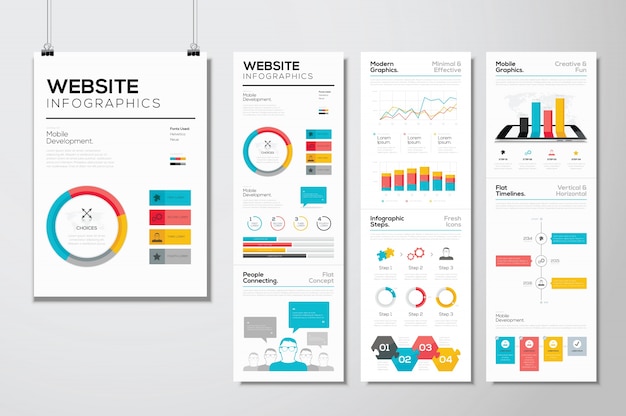Eager To Find Just How Website Style Has Changed Over Time? Dive Into The Development From Simpleness To User-Focused Experiences
Eager To Find Just How Website Style Has Changed Over Time? Dive Into The Development From Simpleness To User-Focused Experiences
Blog Article
Composed By-Kinney Trolle
In the past, web sites were straightforward and concentrated on information. Navigation was straight, and style was for desktop computers. Currently, customer experience is key. Data overviews designs for easy navigation. Receptive formats suit different devices. Today, dark setting minimizes stress, and minimal menus enhance navigating. Interactive functions involve individuals, and bold visuals stand apart. AI assimilation boosts involvement. See just how design has developed to boost your on-line journey.
Early Days of Website Design
In the very early days of web design, simplicity reigned supreme. Medical Website SEO were basic, with limited colors, font styles, and designs. The focus was on offering details instead of flashy visuals. https://www.google.com/maps/place/Moon+and+Owl+Marketing/@32.9757271,-106.5344695,1840583m/data=!3m1!1e3!4m6!3m5!1s0x864ddeaa4179705b:0x488d41d2cc6b9750!8m2!3d32.9757271!4d-97.5696258!16s%2Fg%2F11b6mpccrg?entry=ttu&g_ep=EgoyMDI1MDIxMS4wIKXMDSoJLDEwMjExNDUzSAFQAw%3D%3D accessed the net through sluggish dial-up links, so rate and capability were vital.
Navigating menus were straightforward, typically situated on top or side of the web page. Web sites were developed for desktop computers, as mobile browsing wasn't yet widespread. Web content was king, and designers focused on very easy readability over intricate design components.
HTML was the primary coding language made use of, and designers needed to work within its restraints. Animations and interactive attributes were minimal contrasted to today's requirements. Internet sites were static, with little vibrant web content or customized individual experiences.
Rise of User-Focused Style
With the advancement of internet site layout, a change towards user-focused design concepts has become increasingly famous. Today, producing websites that focus on customer experience is vital for involving visitors and achieving business objectives. User-focused layout includes comprehending the demands, preferences, and habits of your target audience to tailor the web site's layout, material, and includes appropriately.
Designers currently perform complete research, such as individual surveys and use screening, to collect understandings and comments directly from individuals. This data-driven strategy assists in producing instinctive navigation, clear calls-to-action, and aesthetically enticing interfaces that resonate with site visitors. By putting the customer at the facility of the style procedure, web sites can provide a more tailored and delightful experience.
Responsive layout has also emerged as a crucial facet of user-focused design, guaranteeing that web sites are maximized for different gadgets and screen sizes. This adaptability enhances access and use, catering to the varied methods individuals interact with internet sites today. In essence, the surge of user-focused style represents a shift towards creating electronic experiences that prioritize the demands and expectations of completion individual.
Modern Trends in Website Design
Explore the current patterns forming website design today. One prominent pattern is dark mode style, providing a streamlined and modern-day appearance while minimizing eye pressure in low-light settings. An additional crucial pattern is minimalist navigating, streamlining food selections and enhancing individual experience by concentrating on essential elements. Incorporating micro-interactions, such as computer animated switches or scrolling effects, can create a more appealing and interactive website. Receptive layout stays critical, making sure smooth user experiences throughout various gadgets. In addition, utilizing bold typography and unbalanced designs can add visual passion and draw attention to details material.
Integrating AI technology, like chatbots for consumer support or customized suggestions, improves individual involvement and enhances processes. Accessibility has likewise come to be a substantial pattern, with designers prioritizing inclusive design techniques to deal with diverse user requirements. Accepting sustainability by enhancing site efficiency for speed and efficiency is an additional arising pattern in website design. Teaming up with customer comments and information analytics to iterate and boost design constantly is essential for staying pertinent in the ever-evolving digital landscape. By accepting these contemporary trends, you can create a visually enticing, straightforward site that resonates with your target market.
Conclusion
As you reflect on the development of internet site layout from the early days to now, you can see just how user-focused style has actually ended up being the driving force behind modern fads.
Embrace the trip of modification and adaptation in web design, always keeping the user experience at the center.
Keep current with the most recent trends and technologies, and never quit progressing your strategy to develop aesthetically sensational and straightforward internet sites.
Progress, adjust, and produce - the future of website design remains in your hands.
